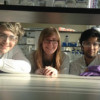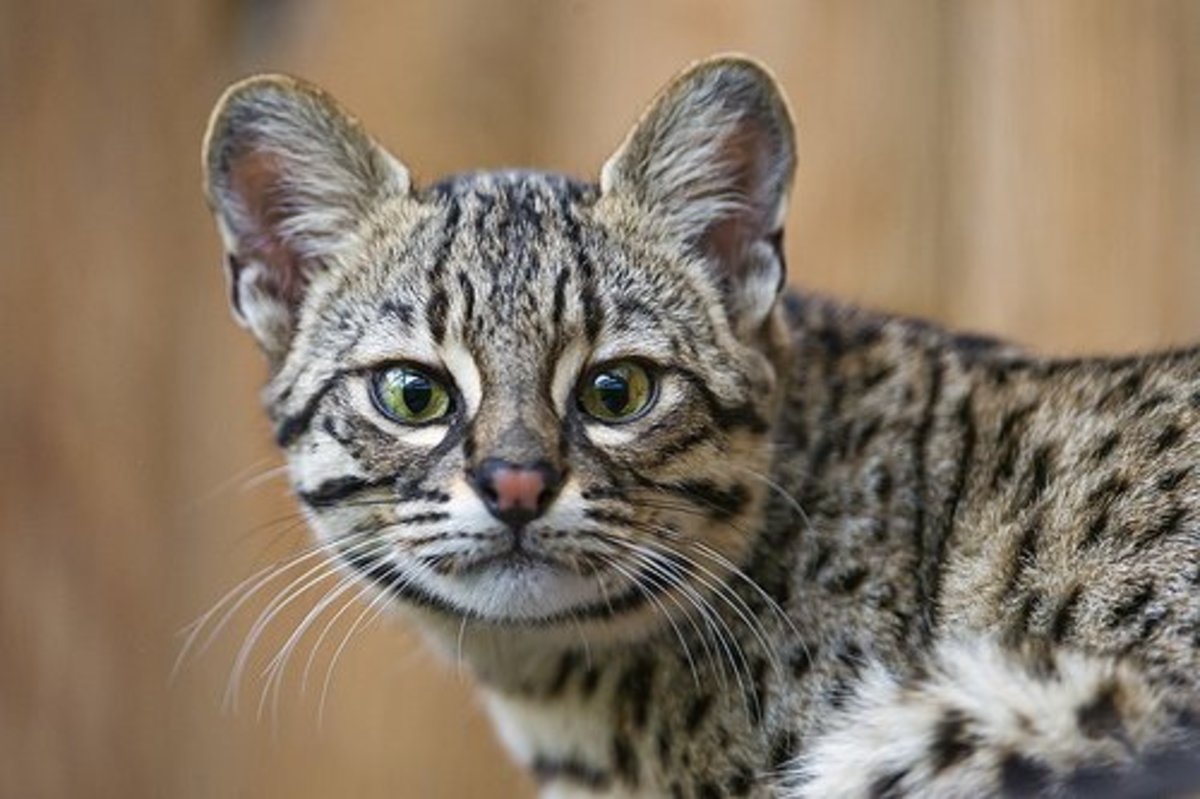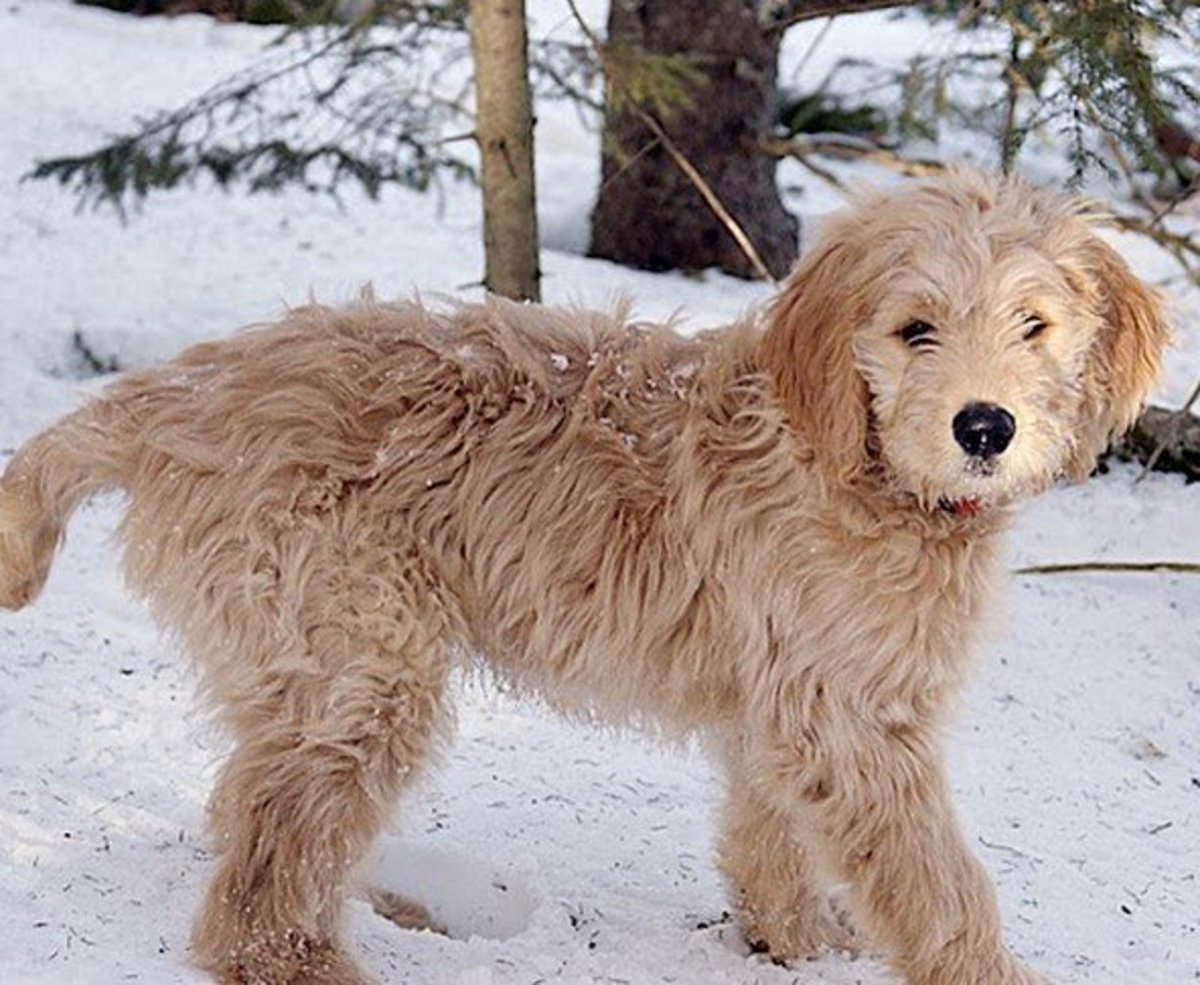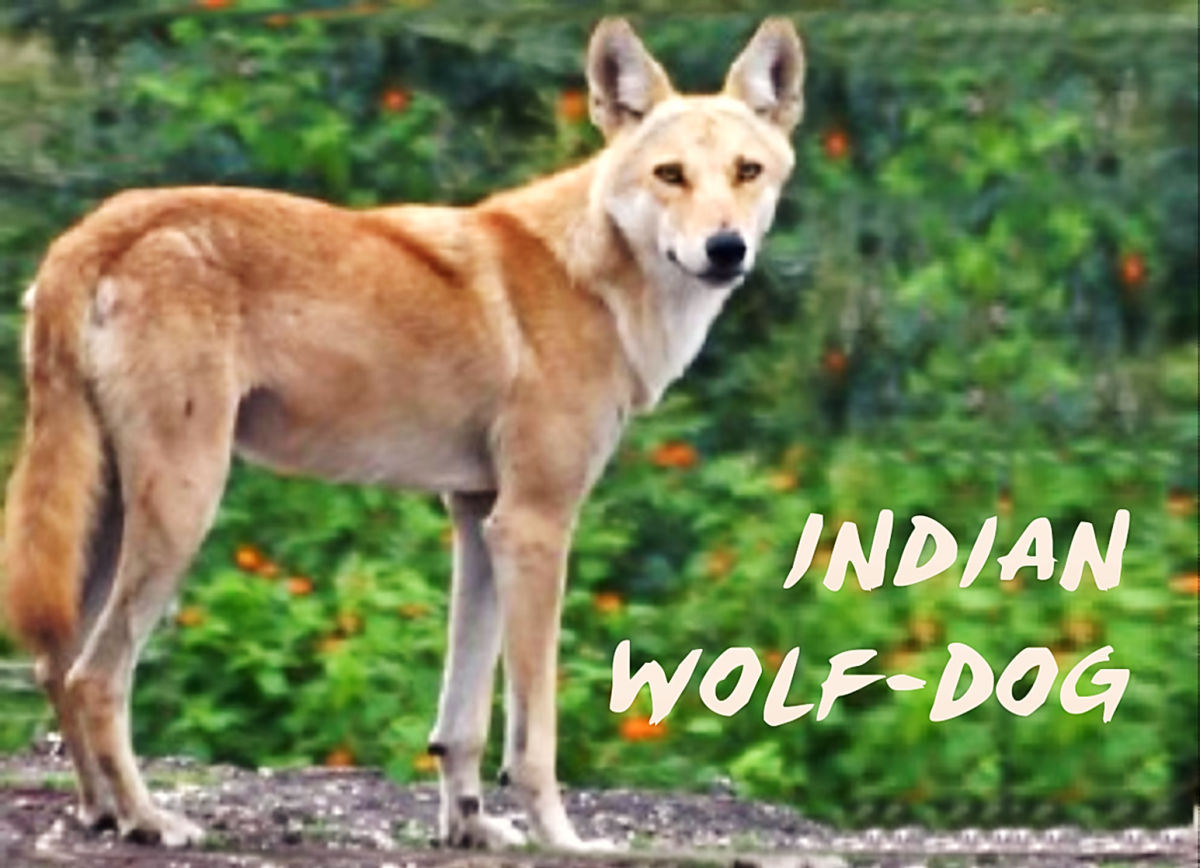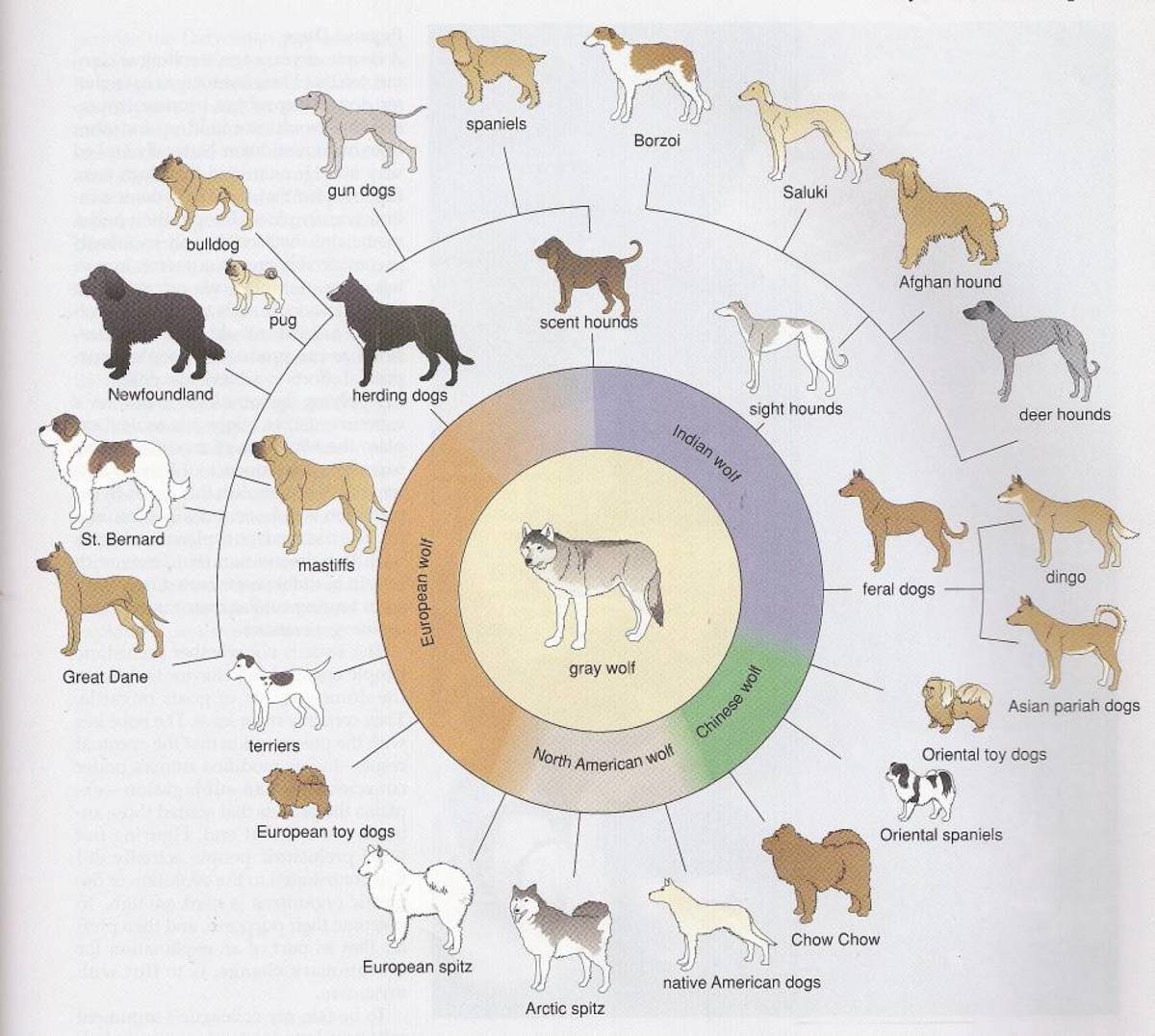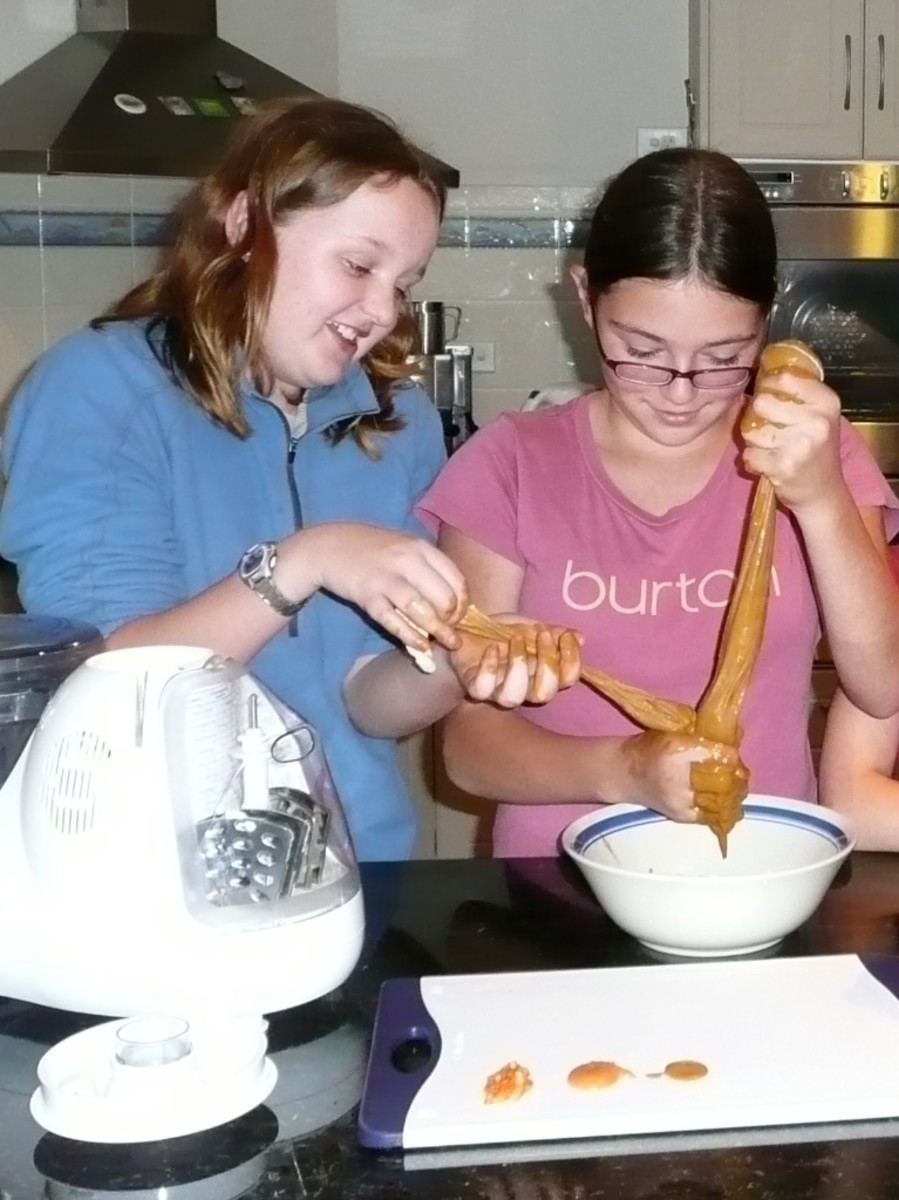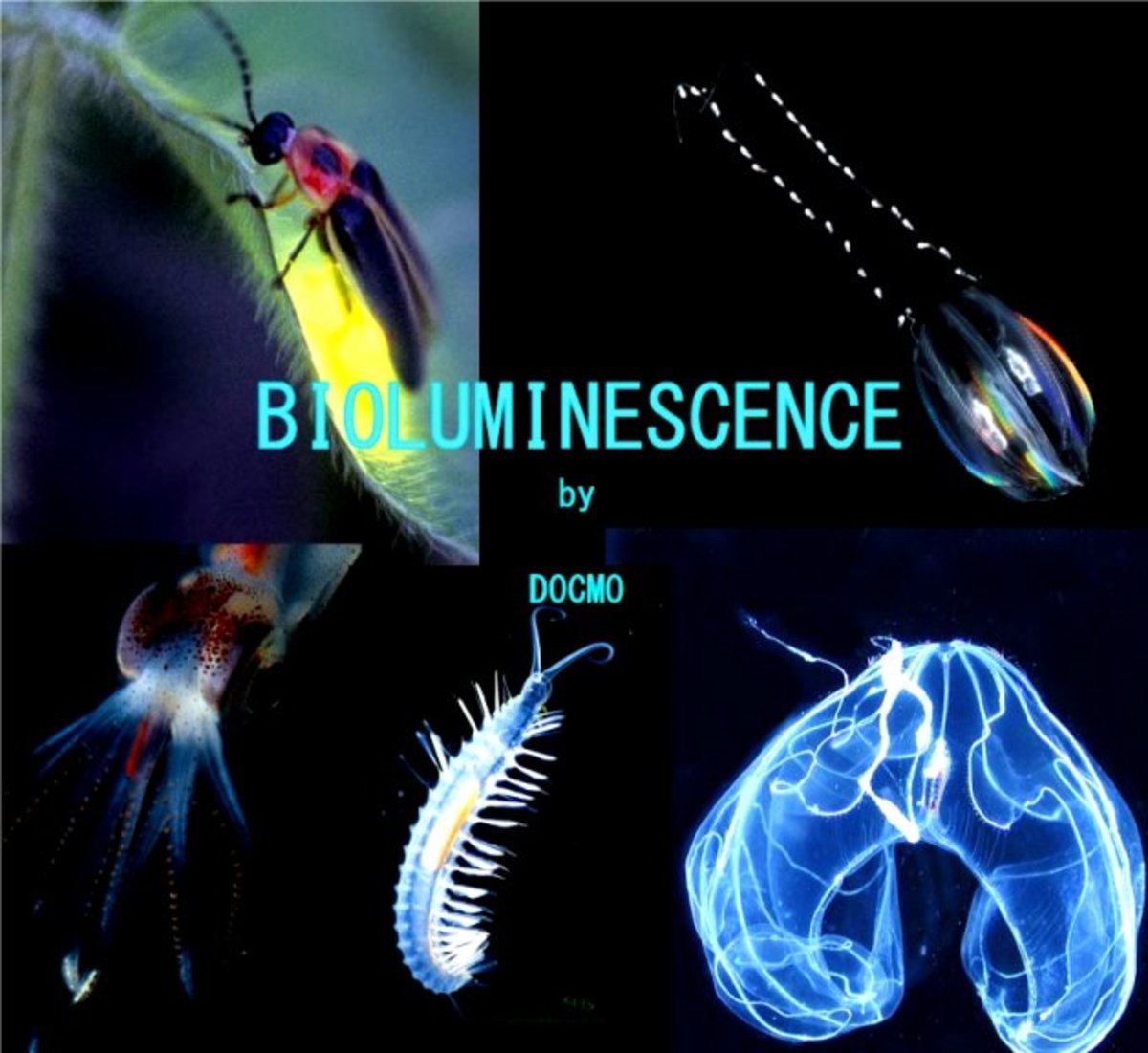The Key Aspects of Modern Breeding
Genetic Variation
Genetic variation today is limited because of humans and the human selection of desirable traits. This repeated process causes populations to form a genetic bottleneck. In the 20th century, the importance of induced variation was realised and further explored. Even today it is still important, with much research being conducted to try to make the process more efficient and to develop the results, for example the research of Massman et al. (2012).
Hybrids
According to the Oxford Dictionary of Biology (2014) a hybrid is defined as being “the offspring of two plants or animals of different species or varieties”. Experimentation with hybrids marked the beginnings of scientific breeding. The complexity and innovation about the purposes that could be fulfilled with hybrids steadily developed and is still growing today.
Fairchild (1718) was the creator of the first man-made interspecific hybrid. He crossed two species of Dianthus spp. (D. caryophyllus, gillyflower and D. barbatus, sweet william) to produce hybrids (Fairchild’s mule) with novel flower colouration (Murphy, 2011). This enabled profit to be generated, since hybrids, such as these, are either sterile or do not breed true and so people have to pay for the offspring (e.g. from garden centres), rather than them making their own through natural means. This is also true of hybrids today, such as farmers buying hybrid seed to grow their crops every year. This prompted research into other areas where such profit could be achieved because of this continuous selling of seeds. An example of this is Lorain (1825), who proposed to create an F1 hybrid of Maize (Zea mays) to feed the growing American population, charging farmers for the seeds. Research is continuing into Maize and America today, showing its importance, for example Ignjatovic-Micic et al.’s (2013) study into the potential of quality protein maize to be adapted to temperate climates.
Shull and East (1908) wished to achieve higher quality crop to better feed the American population also. They independently found that American maize had inbred lines due to selection of related crops for their similar desirable phenotypes, such as their uniform appearances (for the consumers), higher yields and similarity for mechanical harvesting (Shull 1908; East 1908). This inbreeding depression caused genetic problems because of the decreased heterozygoity, resulting in decreased disease immunity. To combat this and increase heterozygosity, the hybridisation of two different inbred species was done. This can cause much increased crop yields, known as increased hybrid vigour. Kölreuter (1761) showed how hybrid offspring could have phenotypic traits from either parent (Murphy, 2011). This promoted research by others, including Wallace (1923), who developed the first commercial hybrid corn and later (1926) bred a new F1 variety every year to maintain a high diversity, through the company he formed, The Hi-Bred Corn Company (DuPont, 2014). Hybrid vigour was also demonstrated by Dzomeku et al.’s study (2010), where a total of 169 farmers from ten communities were interviewed about biotechnologically developed plantain hybrids. 84% of the farmers said the hybrids were superior to the landraces in field establishment, plant growth and vigour.
The hybrids greatly improved crop yields in America, which had large knock-on effects. For example, the average crop yield increased from being approximately 1.8T/ha in 1920s without the hybridisation, to 7-8T/ha in the 1990s. This meant the surplus food could be sold globally, brought its cost down and enabled it to be used as fodder for livestock. However, it also caused many farmers to go out of business during the great depression of the 1930s because if they could not afford the hybrid crops, they were unable to compete in terms of yield and profit. There are further issues concerned with the establishment of hybridisation too, such as the current research that is having to occur because it is still an issue to conduct wheat (Triticum aestivum L.) hybridisation because of poor methods to prevent self-pollination. This is because, as Tomar et al. (2013) said, it “is strictly a self-pollinated crop, where hybrid breeding requires well-characterized cytoplasmic male sterile lines”.
Rice hybridisation, too, was slow to develop, but due to a lack of commercial interest. Since the countries that relied upon rice as a staple were generally poorer areas, meaning that there was less of a market and profit for companies. It was difficult to create because of a lack of understanding and difficulty creating hybrid vigour. Soon after Longping managed to do it in the 1980s, this ‘miracle rice’ became highly important in the 1990s. It was so called because the rice crop had a much increased yield (over 20% in some cases), making enough gown to feed the growing population. These created the required interest to further research into this area and help these developing countries. An example of this is the Photo-thermo-sensitive genic male sterile rice in Kenya. It is a hybrid rice that uses prolonged light length and high temperatures to induce sterility (Kanya, 2013).
Therefore, these hybrids helped to feed the growing populations, provide products and encouraged further research. But to further improve and develop all that can be achieved, hybrids can be crossed between different species.
Wide Crosses
Wide Crosses are the breeding between distant relatives and so is inter-genus to create a hybrid. Viable dispecies hybrids are created by crossing wild and domesticated species using in vitro methods. The embryo is then rescued and grown in vitro, preventing the parent recognising the offspring as abnormal and so aborting it. An example of this is the cross between Tritium (Wheat) and Aegilops (Goatgrass). A more recent example of this is that of the cross between Oryza sativa and O.brachyantha to study whether somatic cell culture could be helpful in realizing alien chromosome recombination in cultivated rice (Bose et al., 2014).
Alleles of different species may not always pair properly, resulting in unviable offspring. In this situation though, spontaneous doubling can occur, resulting in tetraploid offspring. This can be caused by colchicine (discovered in 1937 by Blakeslee and Avery), a chemical from Colchicum autumnale (Autumn crocus) used to make successful wide crosses (Harten, 1998). One example of such tetraploid offspring is Triticale. Tritium (Triticum aestivum) is used as a source of bread wheat but was difficult to grow because it required mild climates, little salt and particular soils, making it relatively expensive. Thus, it was crossed with Secale (rye) to form Triticale. The hybrid was used as a new species to get wheat-like bread in the Middle East. The wide cross was particularly important in this area because over irrigation had left the salty and so unsuitable for tritium, even though it has a lower yield. An issue with over-irrigation and salty soil was also overcome by wide crosses more recently. In the upland rice cultivator NERICA1 (New Rice for Africa), Arabidopsis AtDREBIC was added which is driven by a stress (such as saline stress) -inducible rice lip9 promoter (Ishizaki et al., 2012).
Thus, these wide crosses are still a useful method to combine the genes and so the associated phenotypes of plants that would not have naturally been able to be combined. Yet regardless, crosses can be too wide to make a hybrid, due to pre or post fertilisation incompatibility. Another thing to consider is the required genes must already be available in pre-existing plants, no new genotypes can be produced. If genes are not present in the crop species, other methods to induce variation are required, such as mutagenesis.
Mutagenesis
In the 1980s genetic engineering, in the form of transgenesis, was done to create crops with additional genes. An example of this is the oil-seed crops that were modified to be able to produce omega-3 long chain polyunsaturated fatty acids (Venegas-Carelon et al., 2010). Such genetic manipulation is important because it can greatly improve the lives of others. However, this development is expensive and requires public support, thus countries which may benefit from it are not getting the crops they require. An example of this is the orphan crops, such as Cassava in Africa. This is where mutagens have their uses, to induce this variation.
Originally, mutagenesis was caused due to natural mutation, resulting in variation of the DNA, but now it can be induced. The natural process is very slow, for example it happens every 1 in 10^6 divisions. It is often deleterious too, and so can cause loss of function in that area of the genetic code and so in the affected protein.
The natural process of mutation can be sped up with a variety of means. One such method, and the most natural, is through the use of solar radiation such as x rays, UV rays and gamma rays. Mutation due to UV rays is fairly common, resulting in the uncontrolled division of skin cells, resulting in skin cancer (Berg et al., 2000). X-rays and gamma rays, however, are less common forms of mutation, since humans have little contact with them because they are more shielded by the ozone. Scientists used radioactive sources, for example purified uranium, as sources of rays, and subjected plants and animals to these mutagens. One such effect is like in the case of Marie Curie. Gamma rays have also been manipulated by humans to irradiate food, such as fruits and cereals, since around 1950, when the US government formed the National Food Irradiation Program (EPA, 2012). This was done because radiation delays ripening, inhibits sprouting and disinfects the food.
Gamma rays were also useful in terms of food procurement in Golden Promise Barley in 1956. Golden Promise is a semi-dwarf, salt tolerant mutant created with gamma rays from the cultivator Maythorpe. The aim had been to induce straw but the result was that of a more successful malting quality. The barley with the GPert mutation is useful in making beer and whiskey (Forster, 2000).
X-rays have also been a part of induced variation due to mutagenesis. Muller (1926) exposed Drosophila to large amounts of x-rays, leading to the death of many of them. This provided the first link between radiation and lethal mutation. This was later repeated in 1928 in other model organisms, including wasps and maize. This led to the discovery of homeotic mutation. After exposure to x-rays and Ethyl methanesulfonate, Drosophila had fundamental developmental defects, resulting in disruption of the Antannapedia (Antp) (HOM-C) selector gene, causing their legs to be on their faces. This is because, as Talbert and Garber (1994) said, the Antp disruption causes “determination of many different cell types in the thorax and abdomen of Drosophila melanogaster”.
Sodium oxide and ethyl methanesulfonate (EMS) are chemical mutagens which are used to cause mutation because they are easier to handle than using rays. As Nichterlein et al. (1988) said, “Seeds of linseed (Linum usitatissimum L.) cultivars ‘Raulinus’ and ‘Bionda’ were treated mutagenically with EMS in order to broaden the variation of fatty acid composition in the seed oil and to select mutants with reduced linolenic acid (C18: 3) content”. This resulted in the linola-des3 gene being knocked out but the rest of the genome was apparently unaffected. It is important to remember that although genes can be knocked out to enhance favourable phenotypes, new phenotypes cannot be produced. Another example of chemical mutagens is that the Benzene in petrol makes the fumes carcinogenic. Similarly the mustard gas used to poison WW1 soldiers caused cancer in later life. However, chemical mutagens in nature are a rarity and normally only occur due to volcanoes.
These mutagenesis processes, though, are forms of somatic mutation, meaning that the germ line is not affected. In types of mutation when abnormal gametes form deformed offspring, it is more dangerous. A useful consideration however is that using mutagenesis, it is potentially and theoretically possible to have an unlimited genetic variation.
Selection of Favourable Traits
After variation has been induced, the crops with the most favourable alleles should be selected for. This used to be done as a physical process, waiting for crops to grow and then choosing the least affected crop. However, this method was not very efficient.
One improved method of favourable trait selection was to do with traits and genes, rather than waiting for crops to actually grow. After a domesticated species and a wild species have been crossed for a particular phenotypic trait, the hybrid would then have to be backcrossed with the original domesticated crop to retain more of its traits, rather than the traits of the wild species. The hybrids would have to be carefully chosen, to ensure the individuals that had the desirable trait from the wild type species and the greatest quantity of traits from the domesticated species would be rebred. This process would occur roughly six times, until a species that is approximately the same as the original domesticated species but with the extra desirable genes is created.
There are now new methods of selecting favourable traits, using molecular markers. Trial plots are no longer needed to be grown for each variety (which takes roughly a year) and instead amplified DNA is tested for resistant gene sequences. Although this method is efficient, it is still not suitable for some areas, since it requires sterility, training and uninterrupted power sullies. This means it can no longer be done by farmers and is difficult to do in some developing countries.
References
Barone, D. et al. (2014), ‘Milk, Dairy Food, Calcium and Fats: What Does it Happen Before and After Colorectal Cancer Development?’, Journal of Solid Tumors, Volume 4 (issue 1), Available at http://www.sciedu.ca/journal/index.php/jst/article/view/3678 (Accessed: 05/02/14).
Berg, R. et al. (2000), ‘Impact of Global Genome Repair versus Transcription-coupled Repair on Ultraviolet Carcinogenesis in Hairless Mice’, Cancer Research, Volume 60, page 2858, Available at http://cancerres.aacrjournals.org/content/60/11/2858.short (Accessed: 04/02/14).
Blakeslee, A. and Avery, A. (1937), ‘Methods of Inducing Chromosome Doubling in Plants by Treatment with Colchicine’, Science, Volume 86, page 408.
Bose, L. et al. (2014), ‘A Highly Efficient and Improved Protocol for Exploitation of Somaclonal Variation for Enhancing Alien Gene Introgression in Wide Cross Hybrid of Oryza sativa/Oryza brachyantha’, African Journal of Agricultural Research, Volume 9 (issue 2), Available at http://www.academicjournals.org/article/article1389176502_Bose%20et%20al.pdf (Accessed: 04/02/14).
Dupont (2014), 1926 Henry A. Wallace, Available at http://www2.dupont.com/Phoenix_Heritage/en_US/1926_a_detail.html (Accessed: 04/02/14).
Dzomeku, B., Armo-Annor, F. and Adjei-Gyan, K. (2010), ‘Smallholder Farmers’ Attitude Towards Biotechnologically Developed Musa Hybrids in Ghana, Aspects of Applied Biology, Volume 96, pages 225-231.
East, E. (1908), ‘Inbreeding in Corn’, Report on the Connecticut Agricultural Experiment Station, Volume 14, pages 419-428.
Ehrlich, P. (1968), The Population Bomb, Sierra Club.
Elswyk, M. and McNeill, S. (2014), ‘Impact of Grass/Forage Feeding Versus Grain Finishing on Beef Nutrients and Sensory Quality: The U.S. Experience’, Meat Science, Volume 96 (issue 1), pages 535-540, Available at http://www.sciencedirect.com/science/article/pii/S0309174013004944 (Accessed: 05/02/14).
Environmental Protection Agency (EPA) (2012), History of Food Irradiation, Available at http://www.epa.gov/radiation/sources/food_history.html (Accessed: 02/02/14).
Food and Agriculture Organization of the United Nations (FAOUN) (2006), ‘Livestock’s Long Shadow: Environment Issues and Options’, Available at http://www.fao.org/docrep/010/a0701e/a0701e00.HTM (Accessed: 06/02/14).
Forster, B. (2000), ‘Mutation Genetics of Salt Tolerance in Barley: An Assessment of Golden Promise and Other Semi-Dwarf Mutants’, Euphytica, Volume 120, pages 317-328 Available at http://link.springer.com/article/10.1023%2FA%3A1017592618298#page-1 (Accessed: 02/02/14).
Guecheva, T. et al. (2001), ‘Genotoxic Effects of Copper Sulphate in Freshwater Planarian in Vivo, Studied with the Single-Cell Gel Test (Comet Assay)’, Mutation Research, Volume 497 (issues 1-2), pages 19-27), Available at http://www.sciencedirect.com/science/article/pii/S1383571801002443 (Accessed: 07/02/14).
Harten, A. (1998), Mutation Breeding: Theory and Practical Applications, Cambridge University Press: Cambridge, pages 54-6.
Ignjatovic-Micic, D. et al. (2013), ‘Biochemical and Agronomic Performance of Quality Protein Maize Hybrids Adapted to Temperate Regions’, Maydica, Volume 58, pages 311-317 Available at http://www.maydica.org/articles/58_311.pdf (Accessed: 05/02/14).
Ishizaki, T., et al. (2012), ‘Expression of Arabidopsis DREBIC Improves Survival, Growth, and Yield of Upland New Rice for Africa (NERICA) Under Drought’, Molecular Breeding, Volume 31 (issue 2), pages 255-264, Available at http://link.springer.com/article/10.1007/s11032-012-9785-9#page-2 (Accessed: 04/02/14).
Kanya, J. (2013), ‘Evaluation of Photoperiod and Thermosensitive Genic Male Sterile Lines for Hybrid Rice Seeds Production in Kenya’, International Network for Natural Sciences, Volume 3 (issue 2), pages 1-13, Available at http://www.innspub.net/wp-content/uploads/2013/03/IJAAR-V3No2-p1-13.pdf (Accessed: 05/02/14).
Massman, J. et al. (2012), ‘Genomewide Selection versus Marker-assisted Recurrent Selection to Improve Grain Yield and Stover-quality Traits for Cellulosic Ethanol in Maize’, Crop Science, Volume 53 (issue 1), pages 58-66, Available at https://dl.sciencesocieties.org/publications/cs/abstracts/53/1/58 (Accessed: 04/02/14).
Melse, R. and Timmerman, M. (2009), ‘Sustainable Intensive Livestock Production Demands Manure and Exhaust air Treatment Technologies’, Bioresource Technology, Volume 100 (issue 22), pages 5506-5511, Available at http://www.sciencedirect.com/science/article/pii/S0960852409002351 (Accessed: 06/02/14).
Murphy, D. (2011), Plants, Biotechnology and Agriculture, CABI Publishing, pages 166-167.
Nichterlein, K., Marquard, R. and Friedt, W. (1988), ‘Breeding for Modified Fatty Acid Composition by Induced Mutations in Linseed (Linum usitatissimum L.)’, Plant Breeding, Volume 101 (issue 3), pages 190-199, Available at http://onlinelibrary.wiley.com/doi/10.1111/j.1439-0523.1988.tb00287.x/abstract (Accessed: 02/02/14).
Opsahl, S. and Lambert, R. (2013), ‘Detections, Concentrations, and Distributional Patterns of Compounds of Emerging Concern in the San Antonio River Basin, Texas, 2011–12’, Geological Survey Scientific Investigations Report 2013–5200, page 44, Available at http://dx.doi.org/10.3133/sir20135200 (Accessed: 06/02/14).
Oxford Dictionary of Biology (2014), Hybrid, Available at http://www.oxforddictionaries.com/definition/english/hybrid (Accessed: 04/02/14).
Parris, M. (2007), Norman Borlaug and the Green Revolution, BBC4 TV Documentary.
Rijk, A. (1989) ‘Agricultural Mechanization Policy and Strategy’, Asian Productivity Organization, page 283, Available at http://www.unapcaem.org/publication/cigr_apcaem_website.pdf (Accessed: 07/02/14).
Shull, G. (1908) ‘The Composition of a Field of Maize, American Breeders Association Report, Volume 14, pages 296-301.
Talbert, P. and Garber, R. (1994), ‘The Drosophila Homeotic Mutation Nasobemia (Antp(ns)) and its Revertants: An Analysis of Mutational Reversion’, Genetics, Volume 183 (issue 3), pages 709-720, Available at http://www.ncbi.nlm.nih.gov/pmc/articles/PMC1206221/ (Accessed: 05/02/14).
The Parliamentary Office of Science and Technology (POST) (2012), Livestock Super Farms, Available at http://www.parliament.uk/business/publications/research/briefing-papers/POST-PN-404/livestock-super-farms (Accessed: 06/02/14).
Tomar, R. et al. (2013), ‘Development of Chloroplast-Specific Microsatellite Markers for Molecular Characterization of Alloplasmic Lines and Phylogenetic Analysis in Wheat’, Plant Breeding, Volume 133 (issue 1), pages 12-18, Available at http://onlinelibrary.wiley.com/doi/10.1111/pbr.12116/full (Accessed: 05/02/14).
Venegas-Caleron, M., Sayanova, O. and Napier, J. (2010) ‘An Alternative to Fish Oils: Metabolic Engineering of Oil-Seed Crops to Produce Omega-3 Long Chain Polyunsaturated Fatty Acids’, Progress in Lipid Research, Volume 49, pages 108-119.
Yurchenko, S. and Molder, U. (2007), ‘The Occurrence of Volatile N-Nitrosamines in Estonian Meat Products’, Food Chemistry, Volume 100 (issue 4), pages 1713-1721, Available at http://www.sciencedirect.com/science/article/pii/S0308814605009155 (Accessed: 06/02/14).
